Planting Shrubs
The first step to having a beautiful shrub in your garden is to plant it. This is a little scary because most shrubs are a long-term proposition and many are quite expensive. Add to this the old stories about how difficult the whole thing is and you might be a bit wary of trying this.
Most shrubs these days will be bought in a pot, especially by inexperienced gardeners. This is great because planting can be done at almost any time and there's almost nothing that can go wrong. I'll describe how to plant bare-root shrubs later. Another little luxury with a pot-grown shrub is that it can be left for several months, even years, before being planted in the garden.
By far the hardest part of planting a shrub is preparation of the hole. Water the pot throroughly before you start or even the night before. You can modify the soil near the shrub but its extensive roots will eventually hit your native clay/rock/sand and should be able to withstand the natural conditions. Preparation of the hole is simply to give the shrub a good start. The general rule is to dig a hole twice the depth and width of the pot and to mix some organic material into the soil from the hole. Some slow-release fertiliser like bone-meal or granular 7-7-7 can also be added to the mix but don't overdo it. Water the hole throroughly - in very dry soil, fill the hole with water and allow it to drain.
If the shrub has many circling roots from being trapped in the pot, gently tease some of them loose without breaking them. Plant the shrub with the top of the soil at the same level as in the pot. Use the mixed soil and organic compost to fill the hole firmly. Use your heel to press the soil down. To help with watering, you can plant in a slight hollow or add a raised ring of soil round the edge of the hole. Water again throroughly and water regularly during dry weather for the first year.
Bare-root shrubs are just that, shrubs that have little or no soil, just roots in a bag. They are only available in late autumn and winter when the shrubs are dormant, otherwise they would quickly die in such a condition. They should be planted quite quickly. Planting is essentially the same as for pot plants, but you need a little more care to avoid air pockets and keep the roots in contact with soil. Watering is less important since the shurb is mostly dormant, but it will still need extra water during its first season. Bare root shrubs can be stored for a few weeks by "heeling in". You simply dig a small trench, lay the plants on the mound of soil at one side of the trench, with the roots in the trench, and loosely cover the roots with soil.
Finally, make sure you don't plant your shrubs too close. Most shrubs are large and make an individual statement. They should usually be planted so that there will be space around the plant even when it is mature. Check the final width since many shrubs grow wider than tall, only a few have extremely upright habits.
Moving Shrubs
Rule one when moving a shrub is to get the largest intact rootball possible. Rule two: see rule one. Expect to dig out nearly as much root as there is top growth. You will need mechanical help to dig and move large shrubs. Smaller ones can be hauled on a tarp and the smallest can be carried or lifted into a wheelbarrow. Disturb the roots as little as possible and move the shrub during its dormant season if this is possible.
Replanting is much like the original planting. Big hole, lots of water, and a little fertiliser. Adding organic material is less important since this shrub is already growing in your garden soil.
Pruning Shrubs
Now you've got your shrub planted, maybe moved it to a better place, and you'll be wanting to chop bits off it. It's very hard to generalise about when and how to prune, because every shrub is different.
The timing of pruning is important. Shrubs that flower on new growth, usually in summer, any pruning should be done in the spring as new growth is starting. Vigorous growers are usually pruned quite hard. With slow growers, often only dead wood and crossing branches are removed. Many shrubs flower in spring on old wood and these cannot be pruned until after flowering. Some shrubs need special pruning techniques to encourage flowering, berries, or a particular growth pattern. With all shrubs, it is worth removing dead and diseased branches every year. Dead limbs can be shredded for a nice mulch or composting, but don't use diseased wood.
Prune with sterilised tools if you have been cutting diseased wood. Make a clean cut at a downward angle and cut just above a growth bud so that the branch won't die. It shouldn't be necessary to apply anything to the cut.
Planting a hedge
Now you can plant one shrub but what about a hedge? Hedges are intended to be a solid mass of plant-life, usually dense enough that you can't see through. Evergreen hedges are preferred, but you can have a deciduous hedge or something like a Beech hedge that keeps its dead leaves until spring.
The first step in getting a good hedge is to choose a shrub suitable for the type of hedge. Pick something that will be easy to trim to the height you want, dense enough for any screening you need, suitable for your sun/shade/water situation, and evergreen in your climate if you need winter screening. It is a good idea to choose a relatively trouble free species because that many shrubs packed together is just asking for disease and insects.
All that remains in most cases is to plant your shrubs the right distance apart. Usually you just plant a line of plants, but it is possible to plant two staggered lines to get a deeper more solid hedge with very upright or sparse shrubs. A very few shrubs need special techniques such as planting at 45 degrees to get extra density with a tree-like plant. You should plant about a quarter of the mature shrub's width apart, or a little more if you are planting two staggered rows. Usually this is 1'-2'. A good hedge shrub supplier will have advice for each type of shrub and hedge. {{gwi:2110406}}Image by: Ian Nartowicz

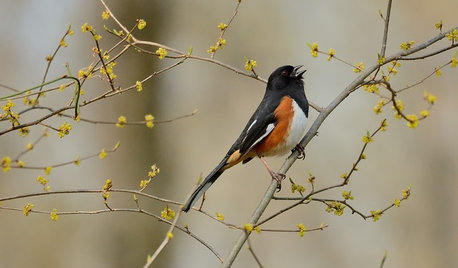
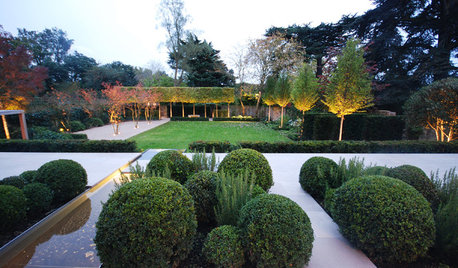

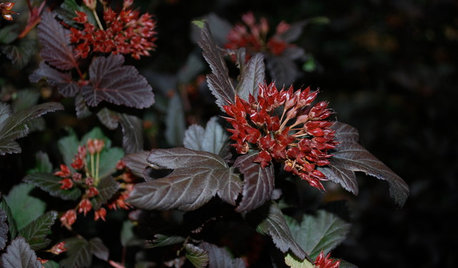


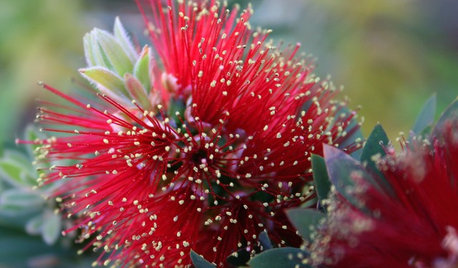

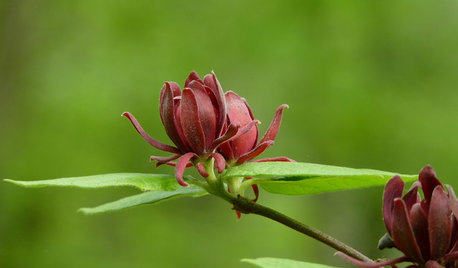



Related Discussions
Sombreuil as a free-standing shrub
Q
dig vs. hard prune, plus i.d. (pix)
Q
Have you moved on from âcommonâ plants?
Q
Prune shrub roses after bloom? Poor performers
Q